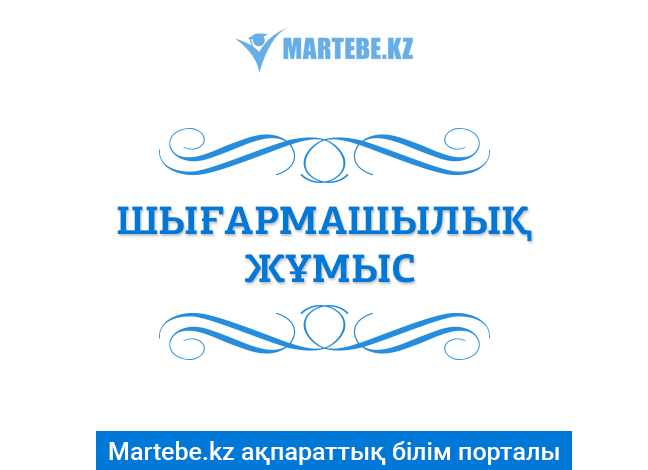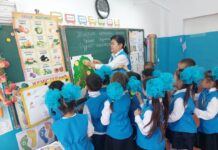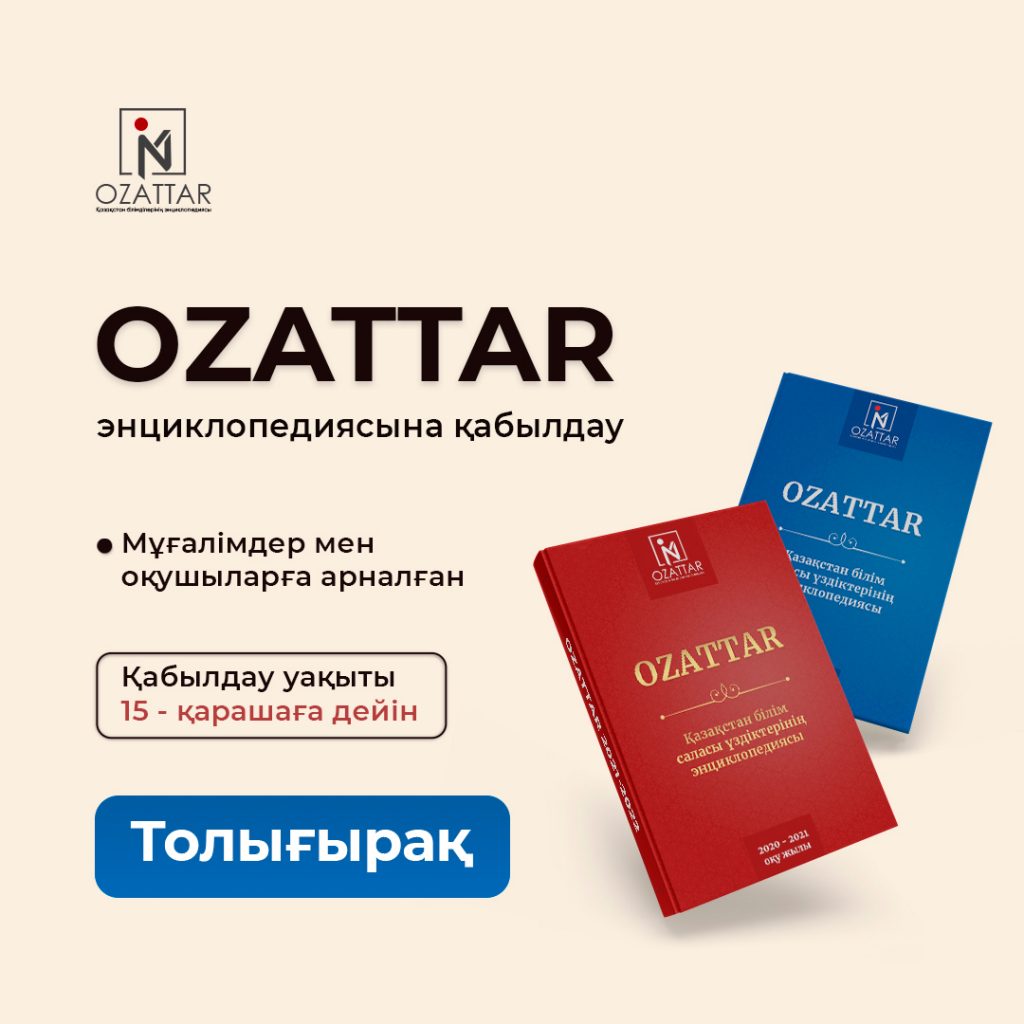Collaborative lesson planning: Maximizing the influence of lesson study
Imanayeva Aigerim Ualikhankyzy, master’s degree student
Astana International University, Kazakhstan, Astana
This article is about the use of collaborative lesson planning in Biology and Science lessons. This article deals with a procedure with exceptionally high learning potential and the use of lesson planning hours allows you to expand the possibilities of classes.
Keywords: collaborative lesson planning, collaborative lesson planning strategies, CLP meetings, teacher learning, professional development, collaborative planning, teacher collaboration
Collaboration is said to be an effective type of professional growth in a lot of literature. Teachers must participate in professional development (PD) that is positioned in a community of practice in order to generate and sustain continuous learning circumstances (Cochran-Smith and Lytle 2009). (Wenger 1998). They may routinely cooperate and discuss ideas and insights in the community of practice, which will help them enhance their teaching. The concept of collaboration in a community of practice is founded on the social constructivist learning theory, which states that a group of people with a shared interest learn together by combining their existing knowledge and experiences via regular contacts (Wenger 1998). Their learning may be focused on many areas of their profession, such as upgrading their instructional and subject matter knowledge (Doyle, Sonnert, and Sadler 2020; Erickson 2005), and even addressing burnouts and attrition. (Zinsser and Curby 2014).
It is important in collaborative lesson planning (CLP) that a collegial climate is created that focuses on connecting instructors’ practices to students’ learning goals (Lovett and Cameron 2011).
The Ministry of Education in China encourages the development of a Teaching Research Group, in which instructors collaborate to design lesson plans and prepare teaching materials based on their combined expertise and efforts (Yuan and Zhang 2016).
Because it has been proven in earlier studies that lesson preparation is a difficult activity for teachers, collaboration in teacher professional development can also focus on lesson planning (Rahman 2019).
Teachers can share their pedagogical experiences and undertake action-reflections on their teaching approaches and assessment tools using lesson plans (Gutierez 2015). Recognizing the importance of collegial contact, a yearlong professional development program for collaborative lesson preparation among primary school science teachers was established.
This is in contrast to the individual lesson planning technique, in which a teacher designs a set of learning delivery components for students in isolation.
The capture of the teachers’ ideas on the benefits of collaborative lesson preparation as part of their reflections-on-action yielded a substantial amount of data.
Teachers were able to maintain their regular cooperation and reflections-on-action over their annual PD by allowing them to experience these opportunities in their learning community.
They saw cooperation as a ‘dissonance’ from their previous solo lesson preparation procedures because it was new to them.
The technique of personalized lesson preparation is common in the Philippines (Lomibao 2016).
Novice teachers can be teamed alongside experienced instructors who have substantial knowledge and expertise on topic and pedagogy in this form of professional development (Borko, Livingston, and Shavelson 1990; Leinhardt and Greeno 1986; Livingston and Borko 1989).
The quality of the learning opportunities supplied to pupils is determined by the quality of the lesson plan (Li, Chen, and Kulm 2009).
Furthermore, there are relatively few professional development initiatives that focus on collaborative lesson preparation.
As a result, it will take a lot of time and effort to create lesson plans that address all of the essential student competencies.
Teachers in such a group deliberate together on the best approaches that will lead to great learning results.
Each member of the learning community, particularly teachers, should be given equal opportunity to contribute their observations and thoughts.
Teachers who work together to plan their lessons gain different perspectives from others and acquire professional growth. Collaborative teaching promotes interactive learning to minimize individualized planning and teaching and to break the culture of isolation. It conforms to the principles of social constructivism which promote interactive learning(Williams 2010).
Collaborative activities increase teacher effectiveness when teachers collaborate with others with the same interests(Garmston and Wellman 1999; Graziano and Navarrete 2012; Hawley and Valli 1999; Hiebert and Stigler 2000). In this study, teachers critiqued their lesson plans based on their observations of students’ responses and, through reflections-on-action that were facilitated by a knowledgeable other, explored the impact of collaborative lesson planning as a form of professional development (Hiebert and Stigler 2000).
Reflection, according to Dewey (1933), is an active and purposeful activity that deals with practical issues. As a result, the professional development in this research blended the themes of collaboration and reflection-on-action in lesson preparation throughout the school year, led by the SCT principles. The focus of the reflections was on making sense of the students’ comments, finding areas in their lesson plans to improve, and reaching an agreement on how to handle the issues they discovered. They identified and articulated the methods of the CLP as a ‘dissonance’ to their individual lesson planning approaches through iterative actions during collaborative lesson planning.
The qualitative case study research design (Yin 2009) was employed in this study. It looked into the case of 30 primary school science teachers who were divided into grade-level teams and engaged in a professional development activity. There were two components to the research. The first section described and documented the advantages of collaborative lesson preparation as a year-long professional development opportunity. The creation of the framework, which is made up of the activities in the CLP process, is the second stage of the research. The author (as part of the knowledgeable other) planned these activities and presented them to the teachers as a full PD team, who then recognized the shared activities they conducted throughout their cooperation. The construction of a framework and a description of the features in terms of the actions that make up collaborative lesson planning practice were the outcomes of this reflection-on-action.
In this study, collaborative lesson planning served as an in-service teacher learning activity. Through reflections-on-action, the teachers learned together from the new ideas and methods for teaching their lessons. These insights confirm Dewey’s (1933) recommendations that reflection should be a problem-solving process which requires ‘open- mindedness, responsibility, and wholeheartedness’.
This study showed that with the right assistance and chances, in-service teachers might value their professional development highly. Through reflections-on-action, the school-based PD in this research kept their regular interactions going. They were able to handle one of the most significant areas of their teaching profession by using their lesson plan as a learning object. During revisions, their new knowledge was solidified and promptly used in their classes, based on their thoughts on theory, practice, and empirical classroom data. This promotes the concept of a professional learning community that emphasizes learning via contact while attempting to embrace the concept of a reflective practitioner in a safe and inquiry-driven setting.(Wandersmann 2005).
According to this study, collaborative lesson preparation developed a «dissonance» from solo lesson planning methods among instructors. Their grade-level teams’ collegial attitude generated mutual confidence and a congenial environment, which was a good ‘dissonance’ from their regular routines. Because each team member participated in the classroom observation, their observations were based on evidence and were shared and discussed during the post-lesson conversations. Their observations served as the foundation for assessing their collectively produced lesson plans. They also utilized the data from their observations to determine which parts of their lesson plans needed to be revised. They learned how to constructively critique their lesson plans as a result of this approach.As a result, the study suggests that future PD include collaborative course preparation with full participation of instructors in decision-making.
References:
Baker-Doyle, K. J., and S. A. Yoon. 2011. “In Search of Practitioner-based Social Capital: A Social Network Analysis Tool for Understanding and Facilitating Teacher Collaboration in a US-based STEM Professional Development Program.” Professional Development in Education
Barab, S. A., J. G. Makinster, and R. Scheckler. 2003. “Designing System Dualities: Characterizing a Web-supported Professional Development Community.” The Information Society 19 (3): 237–256.
Biggs, R., F. Westley, and S. R. Carpenter. 2010. “Navigating the Back Loop: Fostering Social Innovation and Transformation in Ecosystem Management.” Ecology & Society 15 (2): 9.




